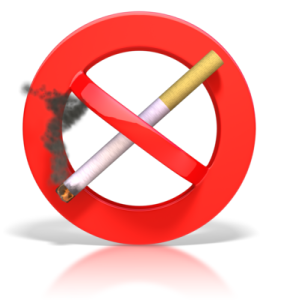 It is not easy to kick a habit. We all know that. And for some reason the ‘bad’ habits are harder to kick than the ‘good’ ones. So what is bad about a ‘bad habit’ and why is it harder to give up? Surely if it was really bad it would be easier to give up?
It is not easy to kick a habit. We all know that. And for some reason the ‘bad’ habits are harder to kick than the ‘good’ ones. So what is bad about a ‘bad habit’ and why is it harder to give up? Surely if it was really bad it would be easier to give up?
Improvement is all about giving up old ‘bad’ habits and replacing them with new ‘good’ habits – ones that will sustain the improvement. But there is an invisible barrier that resists us changing any habit – good or bad. And it is that barrier to habit-breaking that we need to understand to succeed. Luck is not a reliable ally.
What does that habit-breaking barrier look like?
The problem is that it is invisible – or rather it is emotional – or to be precise it is chemical.
Our emotions are the output of a fantastically complex chemical system – our brains. And influencing the chemical balance of our brains can have a profound effect on our emotions. That is how anti-depressants work – they very slightly adjust the chemical balance of every part of our brains. The cumulative effect is that we feel happier. Nicotine has a similar effect.
And we can achieve the same effect without resorting to drugs or fags – and we can do that by consciously practising some new mental habits until they become ingrained and unconscious. We literally overwrite the old mental habit.
So how do we do this?
First we need to make the mental barrier visible – and then we can focus our attention on eroding it. To do that we need to remove the psychological filter that we all use to exclude our emotions. It is rather like taking off our psychological sunglasses.
When we do that the invisible barrier jumps into view: illuminated by the glare of three negative emotions. Sadness, fear, and anxiety. So whenever we feel any of these we know there is a barrier to improvement hiding the emotional smoke. This is the first stage: tune in to our emotions.
The next step is counter-intuitive. Instead of running away from the negative feeling we consciously flip into a different way of thinking. We actively engage with our negative feelings – and in a very specific way. We engage in a detached, unemotional, logical, rational, analytical ‘What caused that negative feeling?’ way.
We then focus on the causes of the negative emotions. And when we have the root causes of our Niggles we design around them, under them, and over them. We literally design them out of our heads.
The effect is like magic.
And this week I witnessed a real example of this principle in action.
 One team I am working with experienced the Power of Improvementology. They saw the effect with their own eyes. There were no computers in the way, no delays, no distortion and no deletion of data to cloud the issue. They saw the performance of their process jump dramatically – from a success rate of 60% to 96%! And not just the first day, the second day too. “Surprised and delighted” sums up their reaction.
One team I am working with experienced the Power of Improvementology. They saw the effect with their own eyes. There were no computers in the way, no delays, no distortion and no deletion of data to cloud the issue. They saw the performance of their process jump dramatically – from a success rate of 60% to 96%! And not just the first day, the second day too. “Surprised and delighted” sums up their reaction.
So how did we achieve this miracle?
We just looked at the process through a different lens – one not clouded and misshapen by old assumptions and blackened by ignorance of what is possible. We used the 6M Design® lens – and with the clarity of insight it brings the barriers to improvement became obvious. And they were dissolved. In seconds.
Success then flowed as the Dam of Disbelief crumbled and was washed away.
 The chaos has gone. The interruptions have gone. The expediting has gone. The firefighting has gone. The complaining has gone. These chronic Niggles have have been replaced by the Nuggets of calm efficiency, new hope and visible excitement.
The chaos has gone. The interruptions have gone. The expediting has gone. The firefighting has gone. The complaining has gone. These chronic Niggles have have been replaced by the Nuggets of calm efficiency, new hope and visible excitement.
And we know that others have noticed the knock-on effect because we got an email from our senior executive that said simply “No one has moaned about TTOs for two days … something has changed.”
That is Improvementology-in-Action.
